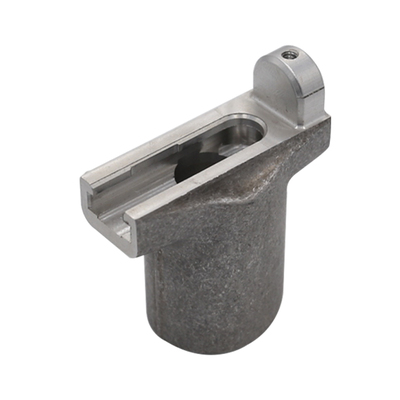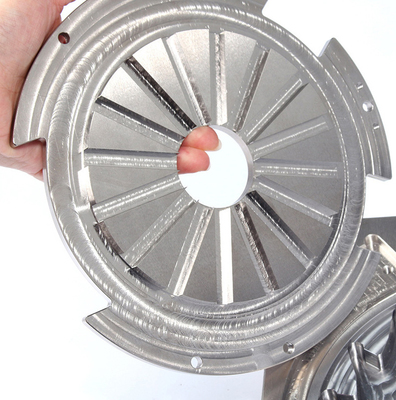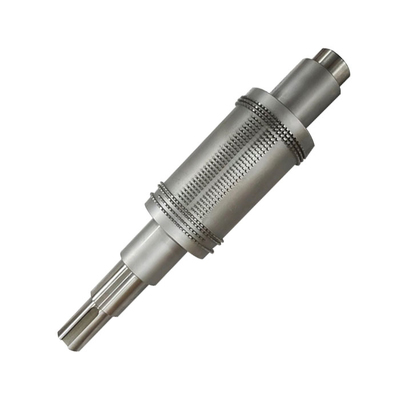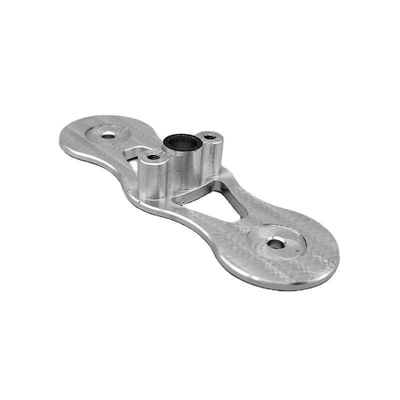Plastic tools to bend the tube to prevent scratches, markings and scratches on the metal tube
For many tube manufacturing applications, successful bending is very simple, especially when using one of the latest rotary stretch tube benders. A complete set of tools: bending die, scraper die, clamping die, pressure die and mandrel, surround and restrict the tube along the inner and outer surfaces so that during the bending process, the metal flows where it intends to flow. Combined with modern control systems, it can provide excellent results for simple to moderately difficult corners. This is not foolproof, because success also requires proper settings and lubrication, but in many cases, wanting a good bending result may require effort again and again, day after day.
When encountering a challenging bend, the manufacturer has several options. Some rotary drawing machines have a bracket assist function, which provides a thrust to assist the drawing force. In addition, tool manufacturers usually have one or two strategies to deal with difficult bends, such as by increasing the length of the fixture or machining a series of serrations to the contact surface of the fixture. The longer the mold, the greater the friction; jagged serrations pierce the surface of the tube. Both provide extra grip to prevent the tube from slipping during bending.
Regardless of the specific details, the goal is to produce components that meet customer needs. In most cases, this means that the component has little distortion and a smooth surface. However, this is not absolute. For hidden tubes, customers may tolerate quite a few ellipses on a round tube, substantial flattening of a square or rectangular tube, slight to moderate bending inside wrinkles, or tool marks. Most of these can be quantified as a percentage deviation from the ideal bend, so the key is to find out what the customer really wants. Some people are willing to pay quite a bit for a primitive bend, while others prefer a cheaper bend with obvious flaws.
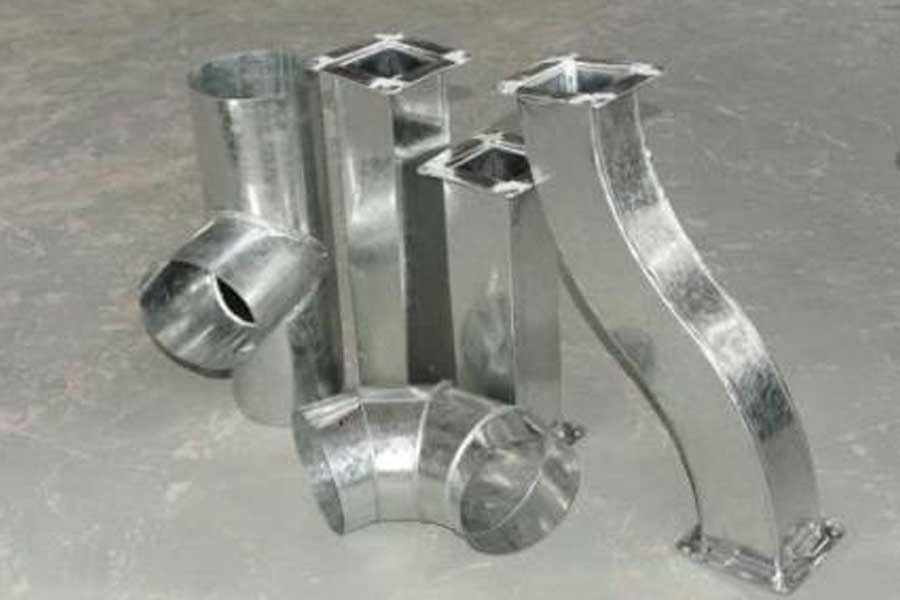
Sometimes a customer specifies a bend, which seems not too difficult, a soft material with moderate and sufficient wall thickness is stretched and bent on the outside without splitting, but not so much that the bundle is along the inside of the bend. At first it looked like a simple bend, but then the client revealed the last criterion: no mark. The application is beautiful, so customers will not tolerate any damaged tools on the surface.
If the test bending causes tooling marks, the manufacturer has two options. One is to use an extra step to polish the finished product to remove all traces of tooling. Of course, polishing can be done successfully, but it means additional processing and more work, so it is not necessarily a cheap option.
Material and structure of workpieceless tools
Elimination of defects is to eliminate the problem of the surface of the steel mold. This is done by inserting these materials entirely from heavy-duty synthetic polymers through manufacturing tools or through manufacturing tools.
Both of these strategies depart from tradition; pipe bender tools are usually made of metal alloys only. Few other materials can withstand bending forces to form a tube, and those that can withstand are usually not very durable. However, two of these plastics have become common materials for this application: polyester and nylon. Although these materials have excellent compressive strength, they are hardly as hard as tool steels, which is why they leave no marks. They also have some natural lubricity. Because of these two factors, unmarked tooling is rarely a direct substitute for standard tooling.
Because the friction of polymer tools is not as good as that of steel tools, the formed parts usually require a larger bending radius, and the design requires longer fixtures than metal tools. Although usually a small amount, a lubricant is still required. Water-based lubricants are the best choice to prevent chemical reactions between the lubricant and the tool.
Although all tools have a limited service life, non-destructive tools have a shorter service life than traditional tools. This is a crucial consideration when citing this type of work, because tools must be changed more frequently. This frequency can be reduced by using polymer inserts that are connected to the steel tool body by mechanical fasteners, and the service life of such tools is generally longer than that of tools made entirely of polymer.
Application of Marr-free tools
No-mar molds are suitable for forming steel, stainless steel, aluminum and copper. Typical applications are different materials. Food and beverage applications are ideal mar-free tools. Ideal smoothness for pipes used in food or beverage processing. Any scratches, dents or scratches left on the surface of the pipe or pipe will gather debris and become a breeding ground for bacteria.
Other common applications include coatings or plated parts. A common misconception is that the coating or electroplating process fills in or conceals defects. Coatings and electroplating layers are very thin, usually to achieve a highly reflective, shiny surface. This kind of surface will aggravate rather than cover up surface flaws, so it is necessary to take preventive measures.
Link to this article: Plastic tools to bend the tube to prevent scratches, markings and scratches on the metal tube
Reprint Statement: If there are no special instructions, all articles on this site are original. Please indicate the source for reprinting:https://www.cncmachiningptj.com/,thanks!
 3, 4 and 5-axis precision CNC machining services for aluminum machining, beryllium, carbon steel, magnesium, titanium machining, Inconel, platinum, superalloy, acetal, polycarbonate, fiberglass, graphite and wood. Capable of machining parts up to 98 in. turning dia. and +/-0.001 in. straightness tolerance. Processes include milling, turning, drilling, boring, threading, tapping, forming, knurling, counterboring, countersinking, reaming and laser cutting. Secondary services such as assembly, centerless grinding, heat treating, plating and welding. Prototype and low to high volume production offered with maximum 50,000 units. Suitable for fluid power, pneumatics, hydraulics and valve applications. Serves the aerospace, aircraft, military, medical and defense industries.PTJ will strategize with you to provide the most cost-effective services to help you reach your target,Welcome to Contact us ( [email protected] ) directly for your new project.
3, 4 and 5-axis precision CNC machining services for aluminum machining, beryllium, carbon steel, magnesium, titanium machining, Inconel, platinum, superalloy, acetal, polycarbonate, fiberglass, graphite and wood. Capable of machining parts up to 98 in. turning dia. and +/-0.001 in. straightness tolerance. Processes include milling, turning, drilling, boring, threading, tapping, forming, knurling, counterboring, countersinking, reaming and laser cutting. Secondary services such as assembly, centerless grinding, heat treating, plating and welding. Prototype and low to high volume production offered with maximum 50,000 units. Suitable for fluid power, pneumatics, hydraulics and valve applications. Serves the aerospace, aircraft, military, medical and defense industries.PTJ will strategize with you to provide the most cost-effective services to help you reach your target,Welcome to Contact us ( [email protected] ) directly for your new project.

- 5 Axis Machining
- Cnc Milling
- Cnc Turning
- Machining Industries
- Machining Process
- Surface Treatment
- Metal Machining
- Plastic Machining
- Powder Metallurgy Mold
- Die Casting
- Parts Gallery
- Auto Metal Parts
- Machinery Parts
- LED Heatsink
- Building Parts
- Mobile Parts
- Medical Parts
- Electronic Parts
- Tailored Machining
- Bicycle Parts
- Aluminum Machining
- Titanium Machining
- Stainless Steel Machining
- Copper Machining
- Brass Machining
- Super Alloy Machining
- Peek Machining
- UHMW Machining
- Unilate Machining
- PA6 Machining
- PPS Machining
- Teflon Machining
- Inconel Machining
- Tool Steel Machining
- More Material

